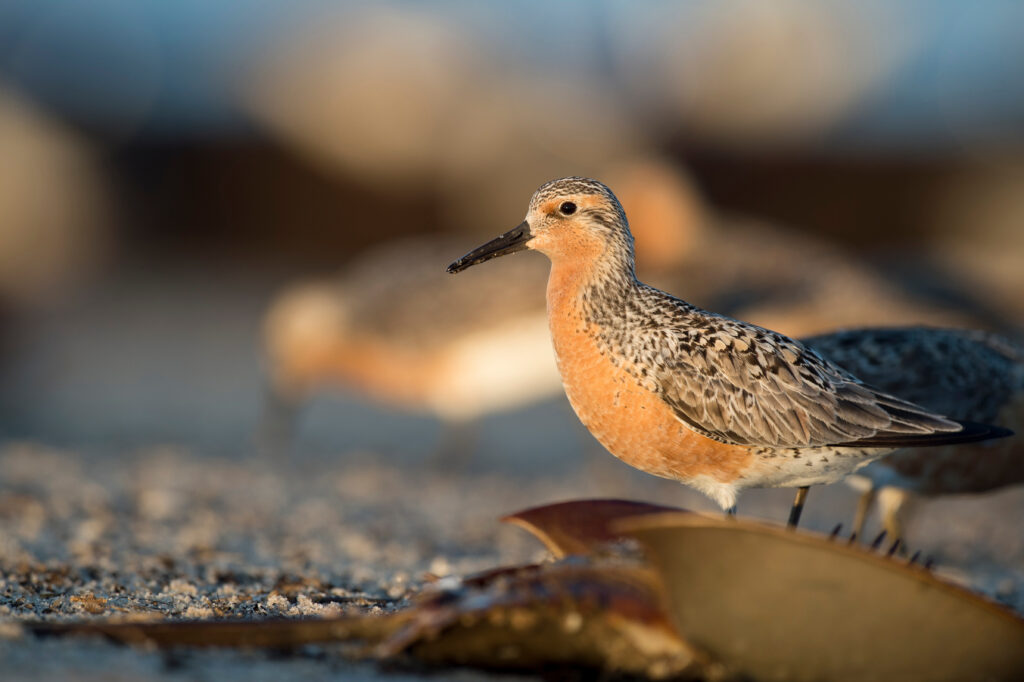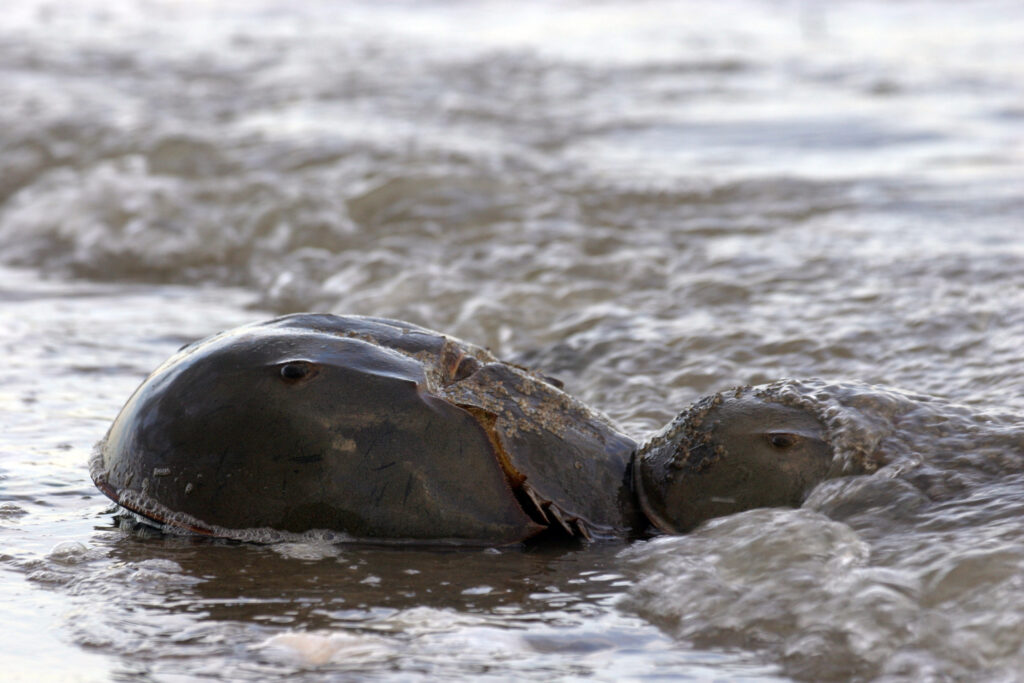Horseshoe Crabs
ACTION ALERT
Your help is needed to ensure New York seizes a historic opportunity to safeguard horseshoe crab populations. In June, the New York Senate and Assembly passed legislation (S.3185 / A.10140) that prohibits the harvest of horseshoe crabs for commercial or biomedical purposes. All that’s left is for Governor Hochul to sign the legislation into law!
Please take a moment to urge Governor Hochul to enact this important measure. You can do this by:
- Calling her office at 518-474-8390
- Sending her a message through this official contact page
- Mailing her a letter or postcard to:
Governor of New York State
NYS State Capitol Building
Albany, NY 12224


Horseshoe crabs are an ancient species that play a keystone role in our coastal ecosystem. The eggs they lay on bays across Long Island each spring provide forage for numerous wildlife species, including turtles, mammals and birds. Many migrating shorebirds, such as the federally endangered red knot, are reliant on horseshoe crab eggs to help them reach their arctic nesting grounds. Juvenile horseshoe crabs are also an important food resource for marine fish, turtles and other wildlife.
New York currently allows 150,000 horseshoe crabs to be harvested annually (while they are trying to spawn!) for use as bait in the whelk and American eels fisheries. In both 2019 and 2024, the Atlantic States Marine Fisheries Commission assessed New York’s horseshoe crab population as “poor.” In both years, it was the only such rating in the mid-Atlantic states – and was down from a “good” rating from the previous assessment in 2009. While some harvest restrictions and other measures have been put in place by NYSDEC in recent years, there is no evidence that the horseshoe crab population is rebounding.
Importantly, horseshoe crabs are facing significant challenges from rising sea levels and other climate change impacts. Increased water levels and increasingly frequent and severe storms are already reducing the availability of the estuarine beach habitat that horseshoe crabs require to spawn. This is especially true in places where bulkheads and other hardened structures on the shoreline prevent beaches from moving inland. It is critical that we protect horseshoe crabs now and allow their populations to grow as they increasingly face the loss of spawning habitat.
Please let Governor Hochul know that you support the horseshoe crab legislation! Thank you.
New Horseshoe Crab Exhibit
Seatuck has created a new exhibit for the outdoor gallery at Eleven Maple in Bay Shore, NY (next door to The Pizzeria). Stop by to see it in its full glory – or enjoy the exhibit panels below. The exhibit was created by Seatuck volunteer, Lisa D’Elia!
About Horseshoe Crabs
Horseshoe crabs (Limulus Polyphemus) have been crawling around the World’s oceans – in essentially their current form – for over 450 million years. They were here to watch the dinosaurs come and go! Their ancient lineage is why the species is often categorizing as a “living fossil.”
These fascinating creatures aren’t actually crabs at all, as they don’t fall under the subphylum “crustacea,” which includes blue crab, spider crabs and other true crabs.

They can be found in tidal and subtidal communities all over Long Island, inhabiting both brackish and marine waters. They are easy to distinguish by their long slender tail and uniquely shaped large brown shell. Horseshoe crabs prefer soft ocean and bay bottoms that they can push through to feed on marine invertebrates.
During the months of May and June, adult horseshoe crabs travel to the shoreline to spawn. This is typically in conjunction with the the highest tides of the month, around the full and new moons. Various shorebirds, turtles, and fish feed off of horseshoe crab eggs. Horseshoe crabs themselves are used for bait by commercial fishers and in the past have been over-harvested leading to a plunge in populations. This and habitat destruction have been major factors in their decline.
For nearly twenty years, Seatuck has been surveying spawning horseshoe crabs at Captree State Park as part of an island-wide NYSDEC effort (let by Cornell Cooperative Extension) to monitor our local populations of horseshoe crabs. The information collected is crucial in understanding and safeguarding this unique species.
Visit our event calendar to learn more about how you can participate in the Captree surveys or visit our horseshoe crab community science page to join the monitoring effort on your own.
